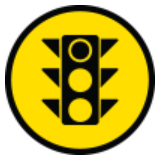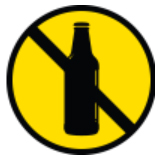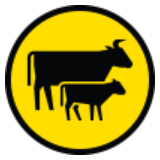Australia is a great destination to explore by car – whether you want to hug the coastline or head-off on an outback adventure, you’ll find plenty of scenic routes. But before you put the key in the ignition and hit the road, it is imperative that you are aware of, and adhere to, local road rules. This includes being aware of the differences in each State and Territory.
We have put together some key pointers below, but for more specific information on safe driving in Australia, use the government websites at the bottom of the page.

Keep left. In Australia, you drive on the left side of the road.

Do not turn left at an intersection when the traffic lights are red.

The driver must not use a mobile phone or operate the GPS while driving unless the device is completely hands-free.

Be mindful of travel times. Australia has some hilly, tight, and winding roads so distances can be deceptive. Plan your journey, take your time, and do not rush. Do not drive when tired. Take breaks and enjoy the journey.

Share the road with cyclists. Cyclists have the same rights as drivers. Slow down and pass safely and carefully.

Do not drive under the influence of alcohol or drugs

The open road speed limit is a maximum of 100 km per hour. Generally, the road speed limit in urban areas is a maximum of 50 km per hour. At times you may need to drive slower due to weather, traffic conditions or winding roads.

All passengers must wear seatbelts at all times, including children. Children under the age of seven must be secured in an approved child restraint.

The driver must carry a current and valid driver licence and an English translation, if applicable, at all times while they are driving.

Do not overtake or crossover when there is a solid line on your side of the road

Be aware of one-way roads, pay attention to road signs.

Winter driving poses wet or icy conditions. Slow down and avoid breaking suddenly. Chains may be required in icy or snowy conditions.

Be cautious of farm animals on rural roads. Slow down, do not sound your horn, and let the animals pass.

Pay attention to public rail crossings with automatic alarms. If the red lights are flashing, stop and proceed once the lights have stopped flashing. Other crossings have a railway crossing sign and a give-way or stop sign. At these crossings, obey the road signs and only cross the track if there are no trains approaching.
Informative and useful government websites for planning your next road trip
Queensland
https://www.tmr.qld.gov.au/Safety/Queensland-road-rules
http://www.transport.qld.gov.au/
New South Wales
https://roads-waterways.transport.nsw.gov.au/roads/safety-rules/index.html
http://www.rta.nsw.gov.au/
Victoria
https://www.vicroads.vic.gov.au/safety-and-road-rules/road-rules
https://www.vicroads.vic.gov.au/
South Australia
https://mylicence.sa.gov.au/road-rules
http://www.transport.sa.gov.au/
Western Australia
https://www.transport.wa.gov.au/licensing/rules-of-the-road.asp
http://www.officeofroadsafety.wa.gov.au/
Northern Territory
https://nt.gov.au/driving/safety
http://www.dpi.nt.gov.au/
Tasmania
https://www.transport.tas.gov.au/road_safety_and_rules/road_rules/tasmanian_road_rules/tasmanian_road_rules_booklet
http://www.transport.tas.gov.au/
Australian Capital Territory
https://www.accesscanberra.act.gov.au/s/
http://www.tams.act.gov.au/



